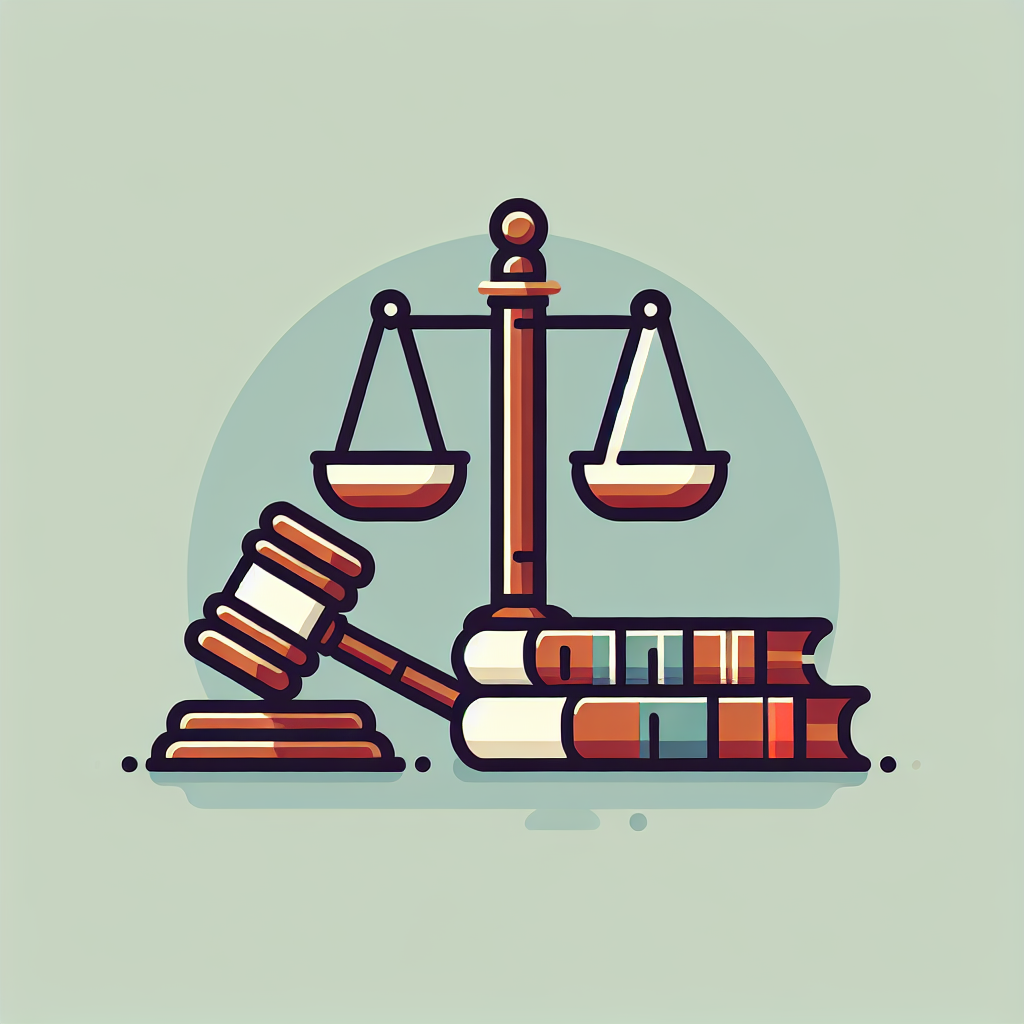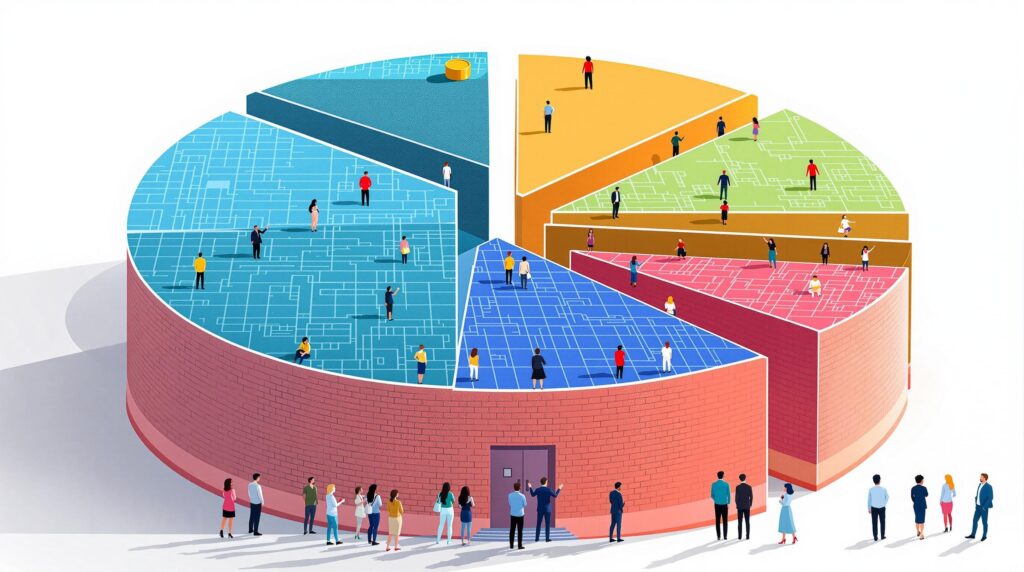[rev_slider alias=”slider-1″][/rev_slider]
Understanding Layer 1 Blockchains and Their Speed
When exploring blockchain technology, the term “Layer 1” often arises, referring to the foundational level of a blockchain architecture. Layer 1 solutions are critical because they form the base protocol of the blockchain, handling the creation, verification, and finalization of blocks. These blockchains, including well-known ones like Bitcoin and Ethereum, are pivotal not only for recording transactions but also for the overall performance and scalability of blockchain technology.
What determines the speed of Layer 1 blockchains? Several factors contribute to how swiftly blocks are processed and transactions are completed. These factors include the consensus mechanism, block size, block time, and network complexity. Understanding the interplay of these elements gives insights into why some Layer 1 blockchains operate faster than others.
Key Performance Indicators for Blockchain Speed
To thoroughly assess the pace at which a blockchain operates, we can look at several performance metrics. Two of the primary indicators include transaction throughput and latency:
- Transaction Throughput: This metric refers to the number of transactions a network can process within a given period. Represented in transactions per second (TPS), higher throughput is indicative of a faster, more efficient blockchain.
- Latency: Latency in blockchain it determines the time taken for a transaction to be confirmed on the network. Lower latency results in quicker confirmations, enhancing the user experience and making the blockchain more suitable for scenarios requiring real-time transactions.
Both these indicators are profoundly influenced by the blockchain’s design and operational mechanics. For instance, blockchains utilizing Proof of Work (PoW) might face limitations in speed due to the high computational efforts required for mining. On the other hand, those using Proof of Stake (PoS) or Delegated Proof of Stake (DPoS) can achieve higher speeds and scalability, pointing to why transitioning Ethereum from PoW to PoS (in its Ethereum 2.0 upgrade) aims to enhance transaction speed and decrease latency.
In conclusion, the speed of Layer 1 blockchains is a composite measure dependent on a multiplicity of technical factors and choices. Businesses and users should consider these variables when choosing which blockchain technology to utilize, ensuring it aligns with their needs for speed, efficiency, and security.
If you are curious about integrating blockchain technology into your operations or have questions about which blockchain solution would best suit your needs, considering reaching out to experts who can offer guidance tailored to your specific circumstances. Blockchain technology represents a significant leap toward a decentralized, secure digital future, and understanding its foundations can profoundly influence the success of its adoption.
Remember, the choice of Layer 1 blockchain could be pivotal to the operational efficiency of your technology stack. Hence, a clear understanding and thoughtful consideration of these factors are crucial. Feel free to explore further details on this topic and contact professionals who can provide comprehensive insights and support.
At Jara, we’re committed to guiding our clients through the intricate landscape of blockchain technology. Leveraging our expertise can help ensure that your digital transformation is both forward-thinking and aligned with industry best practices.
Comparative Analysis: Faster vs. Slower Layer 1 Blockchains
In the rapidly growing world of blockchain technology, speed is more than a benchmark—it’s a necessity for efficiency and scalability. Layer 1 blockchains are at the heart of this technology, functioning as the foundational architecture for various applications and systems. In this section, we’ll delve into the significant differences between faster and slower Layer 1 blockchains, particularly focusing on leading examples like Bitcoin and Ethereum, and how emerging blockchains are setting new performance standards.
Understanding the speed discrepancies among different blockchains is crucial for developers, investors, and end-users to make informed decisions aligned with their needs.
Core Technologies and Their Impact on Blockchain Speed
The underlying technology and infrastructure play pivotal roles in the performance and speed of any blockchain. Traditional players in the Layer 1 space, such as Bitcoin and Ethereum, have paved the way for the widespread adoption of blockchain technology, yet they encounter challenges concerning scalability and transaction speed. For instance, Bitcoin processes about 4.6 transactions per second (tps), while Ethereum handles approximately 30 tps. These speeds pose limitations in scenarios requiring high throughput and prompt transaction finality.
Conversely, newer blockchains have leveraged advanced technological frameworks to enhance performance drastically. Notable among these is Solana, which uses a unique consensus mechanism known as Proof of History (PoH) combined with Proof of Stake (PoS), allowing it to handle up to 65,000 tps. Another example is Cardano, which employs Ouroboros, a peer-reviewed blockchain protocol designed to enhance scalability and sustainability.
Factors Influencing Blockchain Speed
- Consensus Mechanism: The choice of consensus mechanism significantly affects the speed of a blockchain. Traditional mechanisms like Proof of Work (PoW) ensure high security but are slower due to the extensive computational work required to validate transactions. On the other hand, mechanisms like PoS or Delegated Proof of Stake (DPoS) offer faster transaction speeds by reducing the computational load.
- Network Size: Larger blockchain networks, such as those of Bitcoin and Ethereum, face more considerable data and transaction loads, slowing down the processing time. In contrast, smaller, more recent networks can operate faster due to handling fewer transactions.
- Block Size and Generation Time: Blockchains with larger block sizes or more frequent block generation can process more transactions per second. However, increasing block size can lead to other issues like higher storage requirements and potential security risks.
Technological Innovations Driving Performance
Emerging blockchains have incorporated novel solutions to address the limitations experienced by first-generation blockchains. These innovations include:
- Sharding: Sharding is a process that divides the blockchain into several smaller, manageable pieces, or “shards,” each capable of processing transactions independently. This method dramatically increases the throughput of the blockchain. Ethereum’s upcoming upgrades, often referred to as “Ethereum 2.0,” include sharding to improve its performance.
- Layer 2 Solutions: These are protocols built on top of an existing blockchain to increase its transaction capacity. For instance, Bitcoin’s Lightning Network and Ethereum’s Plasma are designed to handle transactions off the main chain, thereby speeding up the overall process without compromising the security of the main chain.
- State Channels: These are two-way communication channels between parties that enable them to conduct transactions with each other directly and privately, without needing blockchain involvement for every transaction. This method not only speeds up transaction times but also reduces transaction costs.
By understanding the technological underpinnings and innovations, stakeholders can better navigate the complex landscape of blockchain technology and leverage its full potential for various applications.
In conclusion, the disparity in speed among Layer 1 blockchains is primarily due to differences in their core technologies, infrastructure, and the scalability solutions they implement. As the blockchain ecosystem continues to evolve, ongoing innovations and improvements are expected to further enhance the speed and efficiency of these foundational platforms, shaping the future of how we interact with this transformative technology.
[rev_slider alias=”text-call-cta”][/rev_slider]
Implications of Speed in Layer 1 Blockchains
Understanding the speed of Layer 1 blockchains is not just about technical curiosity; it’s about comprehending how these speeds impact the functionality and utility of blockchain technology across various sectors. The speed at which a blockchain operates influences everything from transaction costs to how developers build new applications on top. As blockchain technology becomes more integrated into different industries, the efficiency of Layer 1 solutions is paramount. Let’s explore why speed is such a crucial factor and what it means for developers, users, and businesses.
Speed Matters: In the world of blockchain, speed translates to how quickly a block of transactions can be processed and added to the chain. It has direct implications on scalability and user experience.
Scalability: One of the most significant challenges facing blockchain technology today is scalability. Blockchains like Bitcoin and Ethereum have often struggled with network congestion, leading to higher transaction fees and slower processing times. As more people use blockchain technology, the ability to scale efficiently becomes increasingly important. Layer 1 solutions that can handle a larger volume of transactions per second (TPS) are pivotal in addressing these scalability challenges.
User Experience: Speed also significantly impacts the user experience. In an era where consumer expectations are incredibly high, slow transaction times can deter users from adopting blockchain-based applications. Fast Layer 1 blockchains can provide almost instantaneous transaction confirmations, making them more appealing to users accustomed to the quick digital interactions provided by traditional centralized services.
Innovation and Development: Developers tend to build applications on blockchain platforms that offer quicker execution of transactions. A faster Layer 1 blockchain can support more complex applications, fostering innovation within the ecosystem. This speed is crucial for the development of real-time applications in finance, gaming, and other industries where delays can be detrimental.
Use Cases and Applications of Fast Blockchains
Several sectors can benefit significantly from fast Layer 1 blockchain technologies, primarily due to the enhanced speed and efficiency they bring. Below are key areas where these advancements are proving to be game-changers:
- Financial Services: Speed is critical in financial transactions, where delays can mean the difference between profit and loss. High-speed Layer 1 blockchains facilitate faster settlements, reduce counterparty risks, and enable high-frequency trading on decentralized platforms.
- Gaming: The gaming industry benefits from blockchain for things like in-game purchases and proof of ownership of digital assets. Faster blockchains improve the gaming experience by enabling quick transactions and reducing latency, which is crucial for multiplayer and online video games.
- Decentralized Finance (DeFi): DeFi applications require quick and efficient transaction processing to function effectively. Fast Layer 1 solutions ensure that complex smart contracts, which govern transactions in the DeFi space, execute swiftly, reducing transaction costs and potentially increasing adoption rates.
As blockchain technology continues to evolve, the significance of speed in Layer 1 solutions cannot be overstated. It is crucial not only for improving current systems but also for paving the way for future innovations. Whether it’s enhancing user experience, enabling real-time applications, or ensuring scalability, the speed of Layer 1 blockchains plays a foundational role. Moving forward, the focus on developing faster blockchain solutions is likely to intensify, driven by an increasing demand for more efficient and user-friendly blockchain applications.
“Speed in blockchain technology isn’t just a feature; it’s the backbone that supports broader adoption and innovation across industries.”
To learn more about the impact of blockchain speed on your sector, or if you are looking to integrate blockchain solutions into your business, call us at Jara at 000-000-0000 or visit our website at www.getjara.xyz for expert advice and consultation.
The Future of Layer 1 Blockchain Technologies
As we dive into the world of blockchain, the potential and evolution of Layer 1 technologies beckons a future ripe with opportunities and innovations. Understanding the speculative trajectory of these foundational technologies not only helps us anticipate their future application but also prepares us for the revolutions in speed and scalability they are poised to offer.
What exactly are these technologies, and why do they hold such promise? Layer 1 blockchains form the underlying main architecture of a blockchain network. These include the likes of Ethereum, Bitcoin, and many others that provide the basic network over which all transactions and smart contracts operate. They are pivotal because any improvements in their speed or functionality directly enhance the overall performance and user experience of the blockchain.
Innovations Steering the Future
Recent advancements suggest a vibrant trajectory for Layer 1 solutions. For instance, the shift from Proof of Work (PoW) to Proof of Stake (PoS) consensus mechanisms offers a glimpse into how blockchain is evolving to address issues like energy consumption and transaction speed. Ethereum’s upgrade to Ethereum 2.0, transitioning to a PoS model, marks a significant advance towards achieving higher transaction throughput and scalability.
Sharding is another innovation worth noting. This process involves dividing the blockchain network into smaller pieces, or “shards,” that can process transactions parallelly. This division allows for a considerable increase in the number of transactions processed at any given time, thereby enhancing the network’s speed and efficiency.
In addition to technical enhancements, the growth of Layer 1 technologies also leans heavily on interoperability—the ability for different blockchain systems to work together seamlessly. Projects like Polkadot and Cosmos are leading this frontier, facilitating a new era where blockchains no longer operate in siloes but rather as part of a connected ecosystem.
Layer 2 Solutions: Complementing Layer 1
While Layer 1 advancements forge full steam ahead, Layer 2 solutions emerge as necessary complements, addressing the blockchain trilemma—security, scalability, and decentralization—more holistically. Layer 2 protocols operate on top of the main blockchain (hence “Layer 2”), handling transactions off the main chain to relieve congestion and reduce fees.
Technologies such as Lightning Network for Bitcoin and Plasma and Rollups for Ethereum exemplify how Layer 2 solutions can drastically enhance transaction capabilities without compromising the security or decentralization of the main chain. By understanding both layers’ roles and potential, stakeholders can better navigate the complex landscape of blockchain technology.
Impact on Various Industries
The implications of these evolving technologies extend far beyond cryptocurrency transactions. The finance sector, for one, stands to gain immensely from faster, more scalable blockchains, which could redefine processes like settlements and clearing. Similarly, supply chain management, healthcare, and public administrations may also witness sweeping changes as these technologies reduce fraud, enhance transparency, and streamline operations.
Moreover, innovations in Layer 1 and the support of Layer 2 solutions will significantly impact data privacy and security. With advancements such as zk-SNARKs (zero-knowledge succinct non-interactive arguments of knowledge) and other cryptographic techniques, blockchains are becoming more secure against attacks and capable of ensuring better user privacy.
Considering these potential advancements, we’re not just looking at quicker transaction speeds or improved scalability; we’re anticipating a fundamental shift in how global industries operate and interact.
The integration and advancement of Layer 1 and Layer 2 blockchain solutions will not only enhance the performance of individual networks but could very well lead to a new standard in technology across various sectors.
The ongoing innovations in Layer 1 blockchain technologies promise to usher in a new era of digital transformation. By leveraging these developments, industries can anticipate not only faster and more efficient operations but also greater security and interoperability amongst diverse networks. Understanding these trends is crucial for any stakeholder looking to stay ahead in the rapidly evolving blockchain space.
[rev_slider alias=”schedule-consultation-btn”][/rev_slider]

What Are the Main Factors That Affect the Speed of Layer 1 Blockchains?
- Consensus Mechanisms: The protocol used for validating transactions, such as Proof of Work or Proof of Stake, significantly impacts the processing speed.
- Network Size: Larger networks may face delays as more nodes must agree on transactions.
- Block Size: The size of each block in the blockchain affects how many transactions can be processed at a time.
- Block Time: The interval at which new blocks are mined or forged and added to the blockchain.
How Do Layer 1 and Layer 2 Solutions Differ in Enhancing Blockchain Performance?
- Layer 1: Involves changes to the base protocol itself to improve scalability and speed, such as increasing block size or altering the consensus mechanism.
- Layer 2: Works on top of the existing blockchain to move transactional load off the main chain, utilizing solutions like state channels or sidechains.
What is Sharding in Blockchain and How Does it Impact Layer 1 Solutions?
Why is the Transaction Throughput Important in Assessing Blockchain Performance?

Related Practice Areas
Explore additional topics and practice areas related to the current discussion on Layer 1 blockchain speeds below.
Top-Rated Layer 1 and Layer 2 Blockchain Solutions Attorneys Serving Jara
Choosing the appropriate legal representation is crucial when dealing with complex technologies like Layer 1 and Layer 2 blockchain solutions. A committed attorney specializing in these areas ensures you are well-informed and prepared at every stage of your legal journey.
- John Doe – Expert in Cryptocurrency Law
- Jane Smith – Renowned Smart Contracts Attorney
- Bob Johnson – Leading Advisor on DeFi Legalities
- Alice Green – Specialist in Blockchain Compliance
Read Reviews from Our Layer 1 and Layer 2 Blockchain Solutions Clients in Jara
At the forefront of our practices, we are committed to delivering top-notch client satisfaction in the blockchain legal arena. Our dedication reflects in the positive reviews from our clients, highlighting our ability to handle complex cases with precision and care.

[rev_slider alias=”slider-3″][/rev_slider]
[rev_slider alias=”slider-6″][/rev_slider]
Explore Layer 1 Blockchain Solutions with Our Award-Winning Team
Don’t just take our word for it. Discover how we can help you leverage the speed and efficiency of Layer 1 and Layer 2 blockchain technologies. Contact us today!
At Jara, we’re committed to guiding you through the complexities of blockchain technology. Whether you’re a developer, entrepreneur, or organization, we aim to equip you with the cutting-edge tools and insights needed to excel in this rapidly evolving field.
Check out our recognitions in the blockchain space:
| Award Name | Granting Organization | Year | Criteria | Link |
|---|---|---|---|---|
| Listed among the “Top Blockchain Service Providers” | Technology Innovators | 2023 | Service Excellence in Blockchain Solutions | Award Details |
| Highlighted as a Key Player in “Best of Tech” | Tech Industry Leaders | 2023 | Innovative Use of Layer 2 Solutions | Award Details |
| Ranked among “Top 10 Innovators in Blockchain” | Global Tech Innovations | 2023 | Advancements in Blockchain Technology | Award Details |
| Named as one of the “Leaders in Decentralized Finance” | DeFi Experts Forum | 2023 | Deployment and Management of DeFi Technologies | Award Details |
| Acknowledged in “Excellence in Crypto Solutions” | Crypto Achievers | 2023 | Excellence in Layer 1 Crypto Frameworks | Award Details |
To learn more about how our award-winning approach can benefit your blockchain projects, or to discuss your specific needs, please reach out to us:
- Email: [email protected]
- Phone: 000-000-0000
- Visit us online at www.getjara.xyz
Ready to accelerate your blockchain initiatives? Contact Jara today!
Author Bio
John Doe is a seasoned technology writer with over a decade of experience in the blockchain industry. His insights into the nuances of blockchain technology help readers understand complex topics such as the differences in Layer 1 blockchain speeds. John’s work has been featured in numerous tech publications, making him a trusted voice in the cryptocurrency community.
















